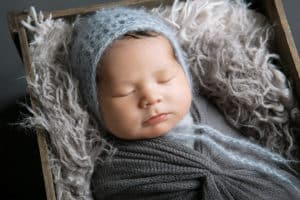Tips and tricks to help you start a newborn photography business.
February 18th, 2022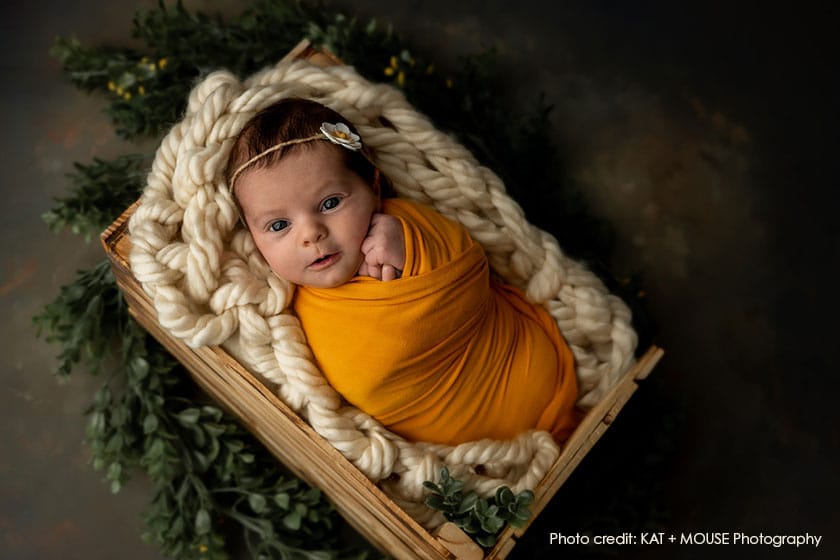
Regardless of what stage of your photography career you’re in, newborns aren’t always the easiest subjects to work with. You can’t communicate with them, they’re not always going to cooperate, and a fussy baby is probably not the aesthetic you’re going for in your photos. On the other hand, with a little preparation on your end, newborns can also sleep soundly, be positioned easily, and, if you’re lucky, they won’t put up much of a fight about having their photo taken.
Achieving beautiful newborn photos that you’re proud of and that your clients love boils down to nailing some key photoshoot considerations.
Whether you’re looking to sharpen your newborn photography skills or you’re a budding photographer who’s interested in specializing in newborn photography, follow along to get all the tips and tricks about newborn photography.
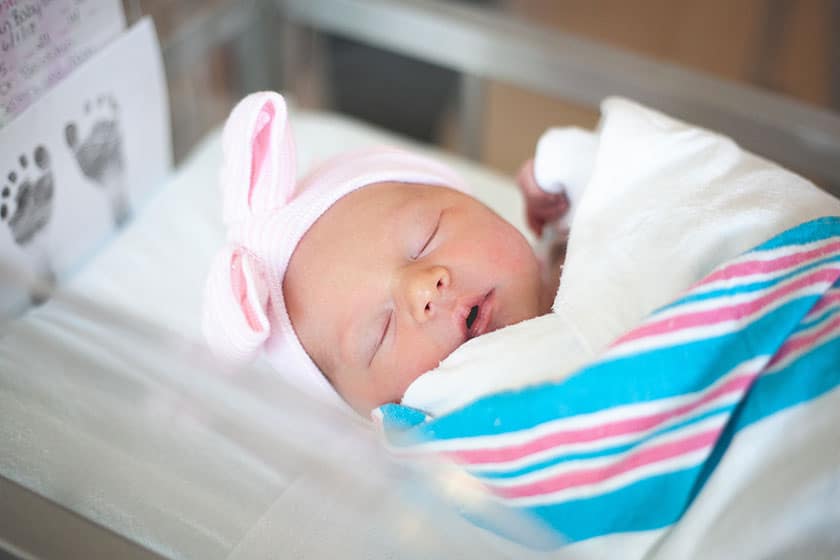
What is newborn photography?
Newborn photography focuses on newborn babies as the subject in a photoshoot.
While there are no hard and fast rules about how old a baby should be to fit within the “newborn” category, the age range widely accepted among the photography industry is within the first two weeks. Most babies still considered in the “newborn” age group will be less than 6 weeks old.
You’ll likely see a range of photography styles in the newborn genre. For instance, parents might prefer a natural setting in the family’s home, while other parents might opt for a stylized photoshoot involving props. When getting started, you might want to give both styles a try, to see which is the best fit for both you and your clients.
In addition, you’ll often find that most newborn photoshoots focus solely on the baby, but in some cases, the photoshoot will incorporate both parents, siblings, and even the family pet. In these instances, the photoshoot could be considered family photography, but as a newborn photographer, it’s important to have some experience working with entire families. Clients might request other members of the family make an appearance, and some family posing experience is helpful.
Building your newborn photography portfolio.
When it comes to hiring a photographer for a newborn photoshoot, parents are justifiably picky about who they choose to capture their newborn’s first weeks of life. Because of this, having a professional, up-to-date portfolio that shows off your best work is essential for success in this niche.
We always talk about setting up your portfolio ASAP because it’s never too early to start compiling your work. Even if you’re a new photographer with very little experience, having an online portfolio gives you an opportunity to provide prospective clients a look at your work. You can even begin building your portfolio by offering to take photos for friends and family at a discounted rate, or for free.
Remember: Everyone has to start somewhere, and by getting your portfolio set up right from day one, you’re in a much better position to grow your newborn photography business quickly and effectively.
If you’ve yet to put together your photography portfolio, don’t forget that Zenfolio offers professional portfolio templates and powerful tools that are specifically designed with photographers in mind. Start your free trial today.
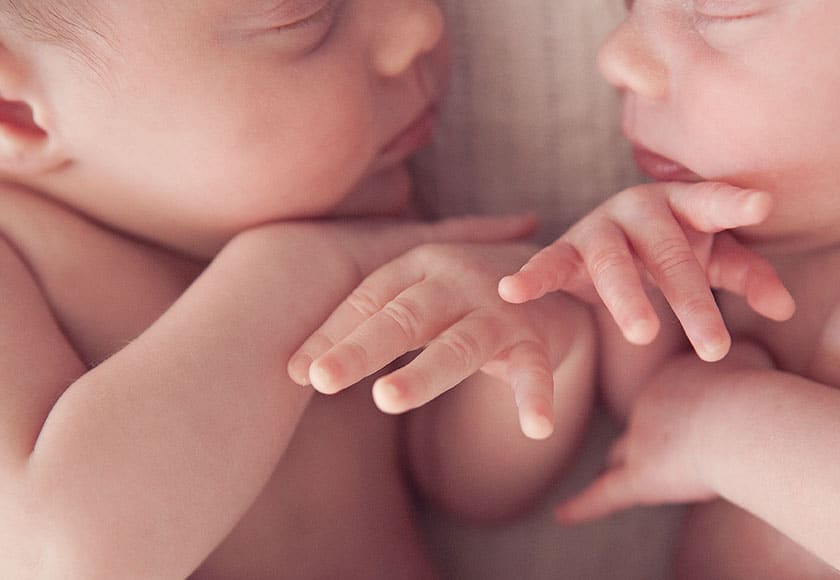
Photoshoot tips for newborn photographers.
As a newborn photographer, you should have all the foundational skills of a photographer: understanding how light works, getting the best angles, framing shots, editing photos, etc.
Having said that, with newborn photography, you have some extra responsibilities and considerations to keep in mind. Let’s review.
How to pose a newborn.
If you’ve been around newborns before then you’re well aware that they spend a good amount of time sleeping, making it much easier to pose them. This doesn’t mean that you don’t need to put some time and effort into poses, though.
First, it is important to note that newborn posing with props involves a lot more than meets the eye! Always keep safety as the highest priority, and know that some poses involve taking multiple shots while supporting the baby with an assistant’s hands, and editing to create the end result. When starting out it can be helpful to reach out to local newborn photographers about assisting them to gain experience, or search out tutorials online from professionals in the newborn genre.
Next, if you want the best newborn photos possible, you’ll want to consult with the parents about what style of newborn photos they envision. During the pre shoot consultation we recommend suggesting to your clients they provide examples of images and styles they like. You’ll find plenty of newborn photoshoot examples on Pinterest or with a simple Google search, and this is a great time to set expectations (you are just starting out, after all) and clarify what poses you can create safely with their baby. Once you’re more confident and established, you’ll likely have a specific style, and parents wanting this look will come to you.
Once you know what the parents want, it’s crucial that you deliver. This means being able to pose the baby (hopefully) without disruption (i.e. waking them/making them cry).
Here are our best tips to help you pose the baby:
- Keep the baby comfortable: Some newborn shoots will have the baby naked. If this is the case, make sure the baby doesn’t get cold. Keep the thermostat high, have a space heater available, or even place a heating pad under the blanket that the baby is on. A warm room will also help keep the baby asleep.
- Keep your hands on the baby: While it would be nice if you could just pose the baby and get your shot, most of the time, the baby will need a little help getting into position. Do this by getting the baby into position and then keeping your hands on them until you feel them relax into the pose. If the baby is tense or squirming around, they are not comfortable and will likely come out of the pose.
- Use the parents: With regards to the tip above, you can also ask the parents to help soothe the baby into position. This will keep your hands free, and it might be of more comfort to the baby if their parents are the ones touching them. They can also be great assistants for poses that require supporting the baby, as we mentioned earlier.
- Try a swaddle: One of the easiest ways to pose a baby and to keep them comfortable is to use a swaddle. Swaddled photos are always well received, can be created using a variety of colorful options, and will keep the baby comfortable and relaxed. In addition, if you want to get other poses first, use the swaddle as your last pose. This will help soothe the baby if they become fussy after being moved around during the beginning of the session.
- Use a beanbag: If you want perfectly posed newborn photos, purchasing a beanbag can be an excellent investment for a newborn photographer. Because of their easily mouldable nature, you can simply place a newborn on the beanbag and position the baby without any hard surfaces or stiff edges in the way. Just be sure that you have thick, textured blankets available to layer over the beanbag to help with the aesthetics of the photo.
Best time of day for a newborn photoshoot.
There’s no exact rules when it comes to the best time of day for newborn photos, but in general, you’ll want to schedule the session during a time where the baby is most likely to be asleep.
Of course newborns tend to sleep quite a bit, opening up the time period for when to schedule newborn shoots. Ideally, include both morning and afternoon availability in your calendar for the best flexibility. Talk with your clients about what time of day is best for them, and use an online session scheduling tool on your website, to make booking the right time quick and easy for both you and your clients. For the best experience, recommend clients plan the session around the baby’s feeding and napping schedule.
Also, because you’ll likely be shooting indoors to keep the baby safe and comfortable, you may not have to worry as much about the sun’s position. Having said that, shooting late in the evening when there is little natural light is less than ideal. We’ll talk more about light next, but in general, aim for a time of day where the sun is soft, natural, and available.
Light during a newborn photoshoot.
Lighting is key during a newborn photoshoot. While you can use a flash, it is best avoided when possible since it could disrupt the baby’s sleep.
Natural lighting is perfect for newborn photography, but we want to avoid too much direct light. Direct light can create very one-dimensional photos. Instead, aim to achieve a 60-degree angle from the window so that you get some shadows in your photos. In addition, being about 3 feet away from the window will also help achieve the perfect amount of light. Try playing around with light modifiers to enhance the natural light to create a more dynamic look.
The most flattering light will be from the side if the baby is being held upright, or face on, slightly to the top of the head, when the baby is lying down. You will generally want to avoid lighting the baby from below their nose; the shadows this angle creates are less than flattering at any age.
If you’re working in a studio, you’ll often already have access to professional lighting equipment which can help you with achieving well-lit photos during any time of day. In this case, all the lighting principles you use in portrait photography will apply.
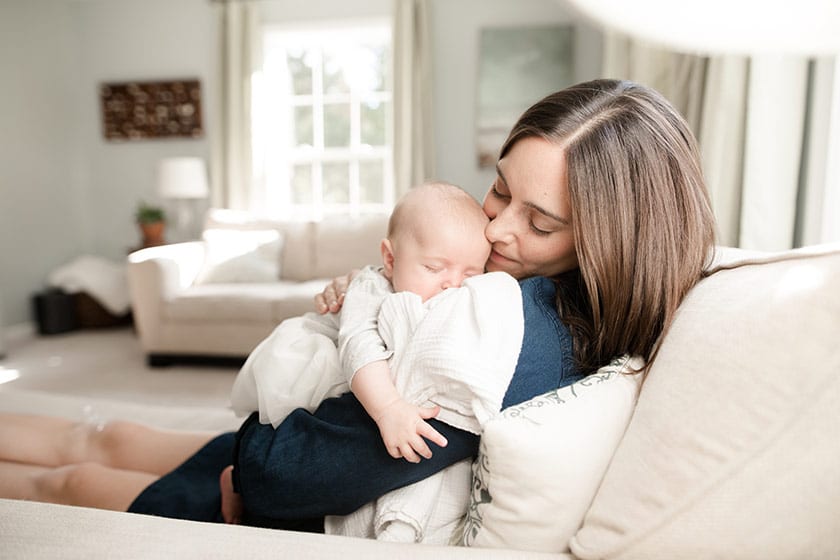
Tips to provide parents before a newborn photoshoot.
As the photographer of a newborn photoshoot, it is your responsibility to ensure that the day of the shoot runs smoothly. While parents are helpful with caring for their babies and soothing them when necessary, it is up to you to ensure that parents are prepared.
You can easily prepare parents by providing them with quick, easy tips that will help ensure the photoshoot goes off without a hitch. Here are some of the most important ones that we recommend sharing with your client:
1. Keep the baby awake before the session.
It’s no coincidence that most newborn photoshoots take place while the baby is asleep. Not only are sleepy newborn photos adorable, but they’re also much easier to photograph.
To help increase the chances that the baby remains asleep during the photoshoot, recommend that your clients keep the baby awake just prior to the session. It will make everyone’s life easier and will ensure you can deliver photos that parents will cherish for a lifetime.
2. Feed the baby 20-30 minutes prior.
Similar to keeping the baby awake, feeding them will also help ensure you have a tired, happy baby during the photoshoot. Because, trust us, there’s nothing that will disrupt a session more than a hungry infant.
On that same note, sometimes an extra feeding is what the baby needs to calm back down mid-session. Newborn sessions are often longer than standard sessions, and if the parents are interested, this is an opportunity to capture the parent and baby performing a very intimate act. Many parents are nostalgic about this time once the baby has outgrown nursing or bottle feeding.
3. Come prepared.
Most parents won’t need any guidance here, but keep in mind that you’re likely working with sleep-deprived parents, so don’t be afraid to remind the parents to come prepared with a full diaper bag if the shoot is taking place outside the home.
For example, a change of clothes is a must during a newborn session. In addition, if the baby is used to a pacifier, parents should absolutely bring this to their session in case the baby needs to be soothed. Extra blankets, diapers, a bottle, a sound machine, and anything else you would normally use to comfort the baby should be available during the session.
4. Let your photographer lead the session.
When their newborn baby is involved, parents understandably want to be active participants in the session. Having said that, we always recommend newborn photographers help manage their client’s expectations about the shoot. This means discussing the shoot beforehand, of course, but it also means letting your clients know you’ve got the shoot under control.
Always put the baby’s safety first, ask parents for assistance when it comes to posing the baby (if necessary), and ensure that parents feel entirely comfortable with you as their photographer.
Newborn photography will go much more seamlessly if everyone is comfortable with one another and everyone is on the same page about the session.
Of course, there are many other factors that go into starting a newborn photography business that are beyond the scope of this article. You’ll need to consider contracts, your session pricing, workflow management, post-production, and image delivery just to name a few.
Zenfolio offers stunning portfolio options so you can share your freshly minted newborn images with prospective clients. In addition, the client booking, gallery, and selling tools in the Zenfolio platform include automated workflows you can use to easily book sessions with expecting parents and share their galleries post-shoot, leaving you with more time and energy to expand and nurture your photography business.

